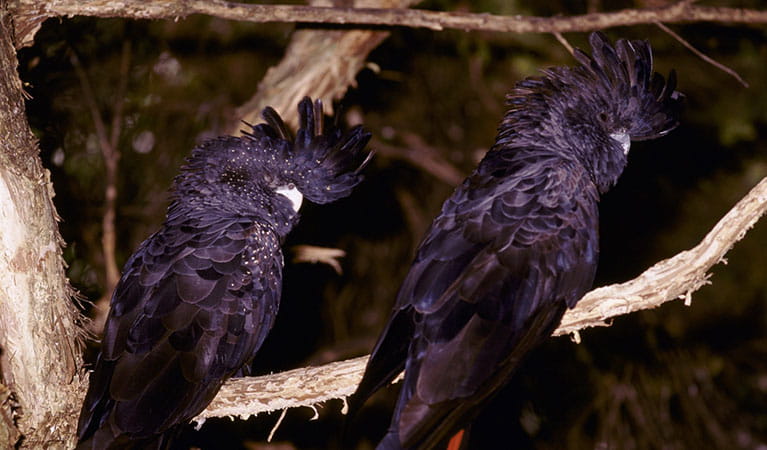Popran National Park
Overview
Popran National Park on the NSW central coast protects Aboriginal sites and offers great walking, kayaking, mountain biking, horse riding and fishing.
Read more about Popran National Park
Take a step back in time and visit the incredible Popran National Park. From hiking to mountain biking, and horse riding to fishing, there’s plenty to do in this iconic Australian setting.
Boasting 4km of Hawkesbury river foreshore, you can paddle through the mangroves, enjoy a spot of fishing and smell the coastal banksia. The park is steeped in Aboriginal heritage so you can’t help but get in touch with the history of the land.
Popran National Park, on the Central Coast, is just an hour and a half north of Sydney, so it makes for an excellent daytrip or weekend getaway.
Local alerts
For the latest updates on fires, closures and other alerts in this area, see https://www.nationalparks.nsw.gov.au/visit-a-park/parks/popran-national-park/local-alerts
Map
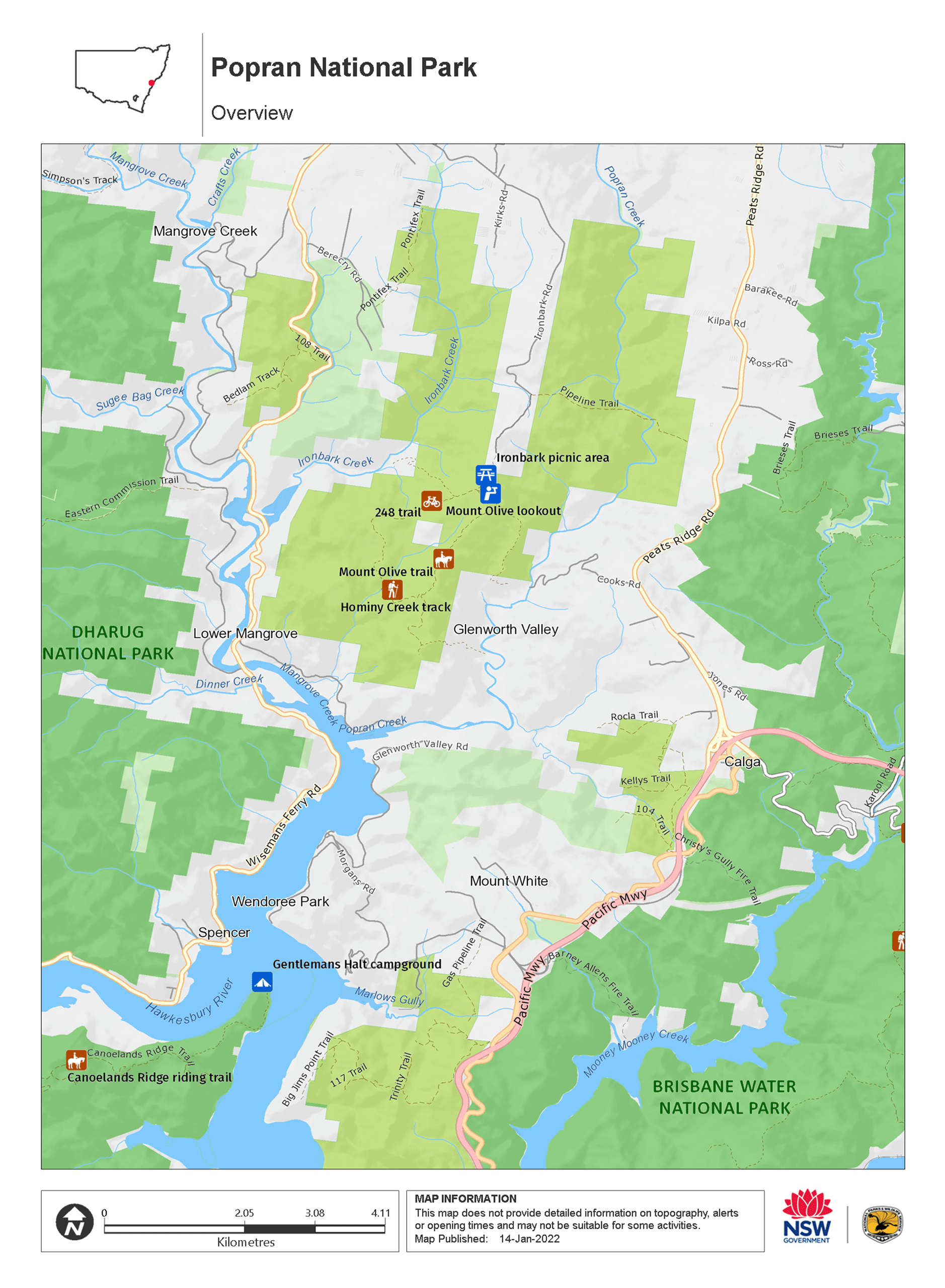
Map legend

Contact
- in the Sydney and surrounds region
Popran National Park is always open but may have to close at times due to poor weather or fire danger.
-
-
Girrakool office
02 4320 4200
Contact hours: Monday to Friday, hours vary. - 59 Girrakool Rd, Somersby, NSW 2250
-
Email: npws.centralcoast@environment.nsw.gov.au
-
Girrakool office
-
-
Lake Munmorah office
02 4972 9000
Contact hours: Monday to Friday, 8.30am to 4pm. - 1 Blue Wren Drive, Wybung NSW 2259
-
Email: npws.centralcoast@environment.nsw.gov.au
-
Lake Munmorah office
Visitor info
All the practical information you need to know about Popran National Park.
Getting there and parking
From Sydney:
- Take the F3 Sydney-Newcastle Freeway
- Exit at Calga onto Peats Ridge Road.
- After 13km turn left into Wisemans Ferry Road
- After a further 8km turn left into Ironbark Road.
From Newcastle:
- Take the F3 Sydney-Newcastle Freeway
- Exit at Peats Ridge Road
- After 10km turn right into George Downs Drive
- Turn left into Wisemans Ferry Road
- After a further 8km turn left into Ironbark Road
Parking
- Ironbark picnic area See on map
Road quality
4WD to the Ironbark picnic area. Visitors in 2WD vehicles will need to park and leave their vehicle 600m from the Ironbark picnic area.
- Unsealed roads
Vehicle access
- Most roads require 4WD vehicle
By bike
Check out the Bicycle Information for NSW website for more information.
By public transport
For information about public transport options, visit the NSW transport info website or NSW country transport info website
Best times to visit
Weather conditions are usually quite moderate in Popran National Park. In summer, however, in summer the temperature can climb above 30C. With its pleasant climate and year-round beauty, any time is a good time to visit Popran National Park.
Spring
Go walking along the Emerald Pool Loop to see fantastic wildflower displays.
Summer
Enjoy a relaxing day exploring the edges of the southern section of the park by boat, canoe or kayak to discover hidden fishing spots.
Weather, temperature and rainfall
Summer temperature
Average
23°C and 27°C
Highest recorded
42.9°C
Winter temperature
Average
17°C and 22°C
Lowest recorded
0.1°C
Rainfall
Wettest month
February and March
Driest month
June and July
The area’s highest recorded rainfall in one day
230.2mm
Facilities
Toilets
Picnic tables
Drinking water
Maps and downloads
Prohibited
Pets
Pets and domestic animals (other than certified assistance animals) are not permitted. Find out which regional parks allow dog walking and see the pets in parks policy for more information.
Smoking
NSW national parks are no smoking areas.
Nearby towns
Peats Ridge (20 km)
Located on the NSW Central Coast, just north of Hawkesbury River, Peats Ridge is close to Popran National Park, where you can enjoy a spot of bushwalking, cycling, river fishing and paddling, and explore the Aboriginal history of the area.
Gosford (39 km)
Gosford is a great destination for a family day trip or holiday. It's situated on Brisbane Water National Park and surrounded by state forests, lakes and beaches.
Sydney City Centre (90 km)
No trip to Sydney is complete without spending some time in the city’s beautiful parks. Whether it’s in central areas like Hyde Park or the Royal Botanic Gardens or further out in Centennial Parklands, there’s plenty of green space to go out and enjoy.
Learn more
Popran National Park is a special place. Here are just some of the reasons why:
Rich Aboriginal heritage
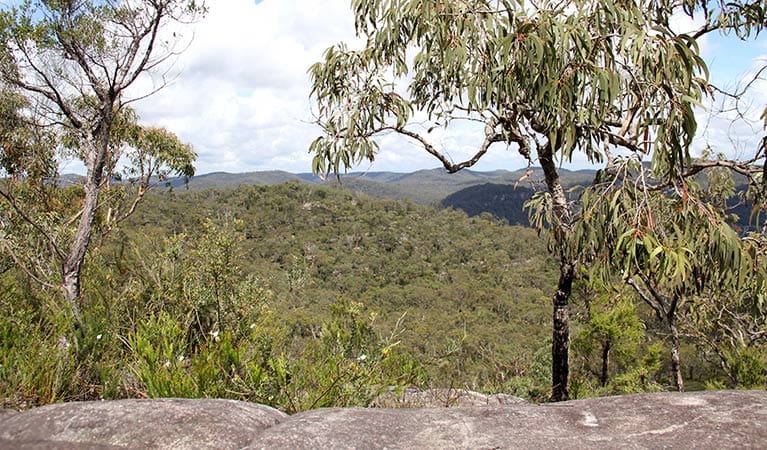
When you visit Popran National Park, you'll see evidence of 11,000 years of rich Aboriginal heritage. From the earth to the waterways, animals and plants, each of these holds a special place in the hearts of the custodians of this land, and the park proudly protects these significant places so we can celebrate Aboriginal culture for generations to come. The park protects a number of Aboriginal sites, like rock engravings, sandstone shelters and foreshore middens. If you find an axe grinding groove in the sandstone, you might be able to imagine how you'd sharpen your tool to catch a meal for your family.
Outdoor adventurer's playground
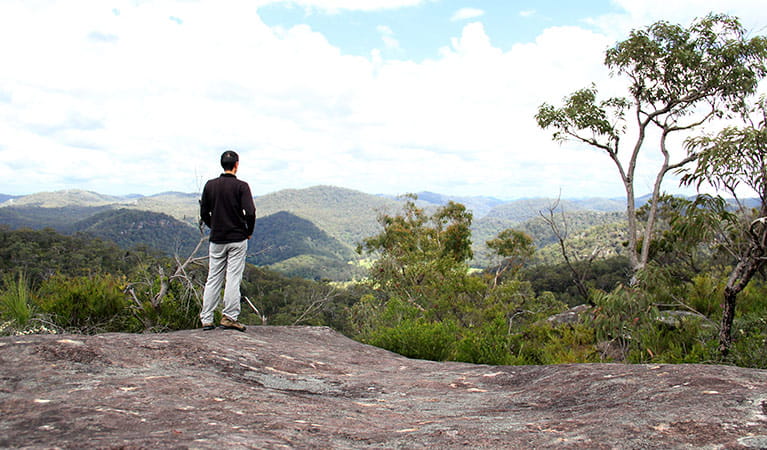
Popran National Park offers an immense range of opportunities for recreation in a beautiful Australian bushland and river setting. Offering visitors expansive landscapes and gorgeous water views, it is one of only a few parks on the Central Coast that caters for horse riding and mountain biking. Both the 248 trail and the Mount Olive trail can be explored by horse or by bike, and you can enjoy a picnic or swim to relax after your efforts.
- 248 trail 248 trail is a popular horse riding and mountain biking track which meanders through Popran National Park in the NSW Central Coast hinterland.
- Horse riding adventures in Popran National Park Saddle up with Glenworth Valley Outdoor Adventures for an unforgettable horseback tour along scenic bushland trails in Popran National Park, not far from Sydney.
- Mount Olive lookout Mount Olive Lookout is only a short walk from Ironbark picnic area in Popran National Park on the central coast and offers scenic views over Popran Creek.
A haven for wildlife
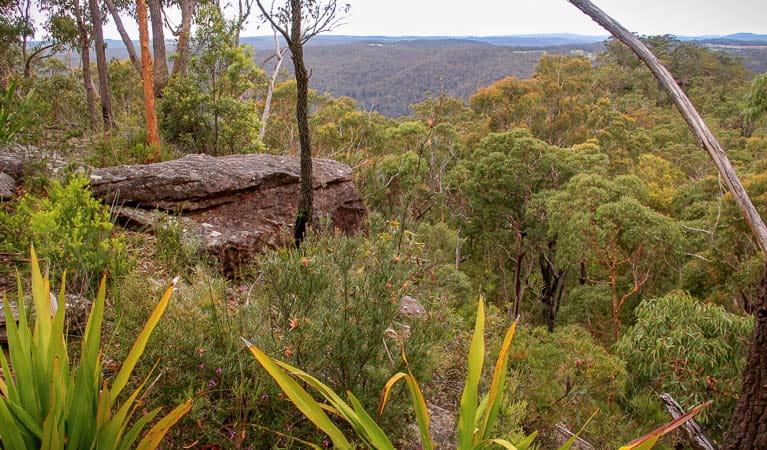
The increasingly rare, untouched freshwater streams and mangroves of the Hawkesbury river are a sanctuary for the many animals that live there. If you're an avid birdwatcher, you might catch glimpses of glossy black cockatoos and masked owls in the park's tall forests and wet gullies. You are unlikely to see the nocturnal yellow-bellied glider during the day, but you might be lucky to hear their distinctive growling call, it's been recorded to have been heard up to 500m away.
- 248 trail 248 trail is a popular horse riding and mountain biking track which meanders through Popran National Park in the NSW Central Coast hinterland.
Plants and animals protected in this park
Animals
-
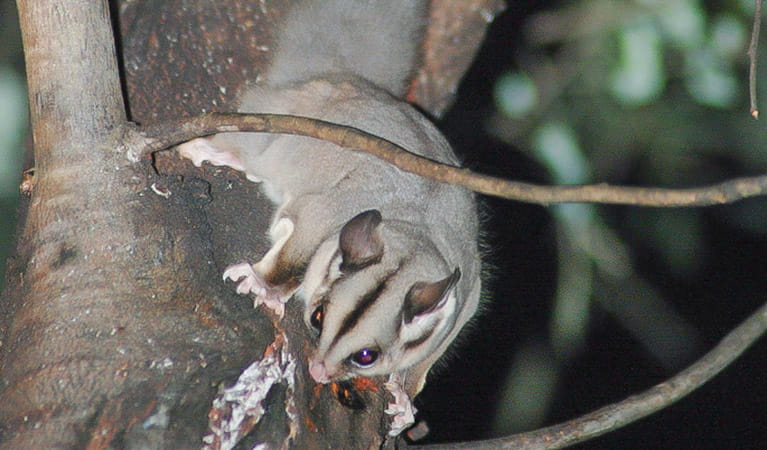
Sugar glider (Petaurus breviceps)
The sugar glider is a tree-dwelling Australian native marsupial, found in tall eucalypt forests and woodlands along eastern NSW. The nocturnal sugar glider feeds on insects and birds, and satisfies its sweet tooth with nectar and pollens.
-
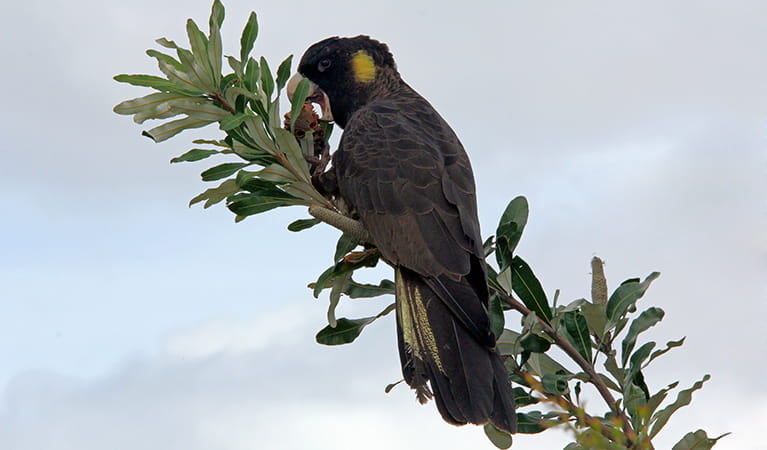
Yellow-tailed black cockatoo (Calyptorhynchus funereus)
The yellow-tailed black cockatoo is one of the largest species of parrot. With dusty-black plumage, they have a yellow tail and cheek patch. They’re easily spotted while bird watching, as they feed on seeds in native forests and pine plantations.
Plants
-
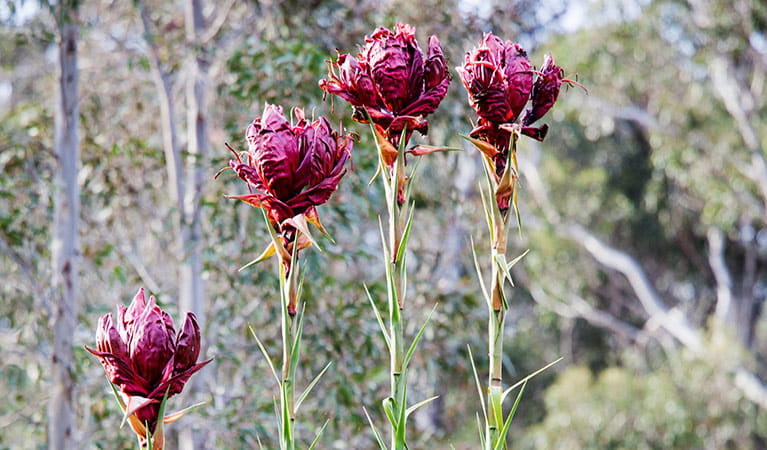
Gymea lily (Doryanthes excelsa)
The magnificent Gymea lily is one of the most unusual Australian native plants, found only along the coast and surrounding bushland of the Sydney Basin, from Newcastle to Wollongong. In spring this giant lily shoots out spectacular red flowers that can reach heights of 2-4m.
-
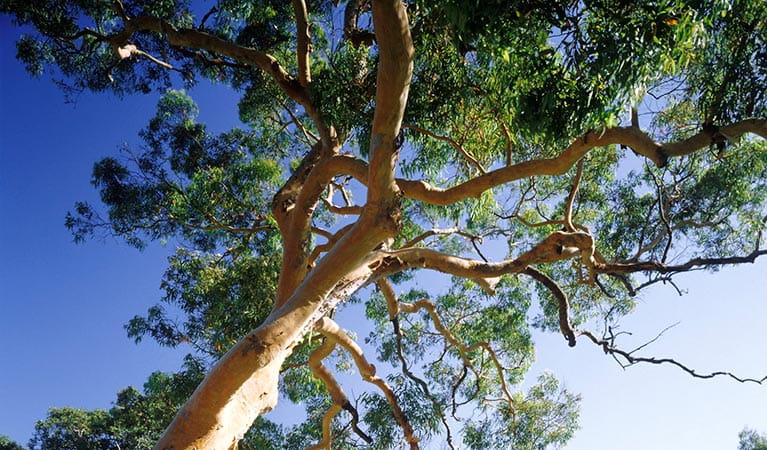
Smooth-barked apple (Angophora costata)
Smooth-barked apple gums, also known as Sydney red gum or rusty gum trees, are Australian native plants found along the NSW coast, and in the Sydney basin and parts of Queensland. Growing to heights of 15-30m, the russet-coloured angophoras shed their bark in spring to reveal spectacular new salmon-coloured bark.
-

Grass tree (Xanthorrea spp.)
An iconic part of the Australian landscape, the grass tree is widespread across eastern NSW. These Australian native plants have a thick fire-blackened trunk and long spiked leaves. They are found in heath and open forests across eastern NSW. The grass tree grows 1-5m in height and produces striking white-flowered spikes which grow up to 1m long.
Environments in this park
Education resources (1)
What we're doing
Popran National Park has management strategies in place to protect and conserve the values of this park. Visit the OEH website for detailed park and fire management documents. Here is just some of the work we’re doing to conserve these values:
Understanding landscapes and geology
NPWS is dedicated to preserving the special landscapes and natural assets of Popran National Park. Programs to protect and preserve the quality of its land, waterways and unique ecosystems are in effect. Landscape rehabilitation is carried out where required and monitoring activities are ongoing.
Preserving biodiversity
Popran National Park protects its plants and animals, and NPWS shows its commitment to threatened, vulnerable and endangered species by conducting frequent monitoring and environmental assessment in this park. Bush regeneration projects are also in effect to rehabilitate native vegetation and restore health to ecosystems. Weed control is an ongoing activity and the community is engaged where possible.
Managing weeds, pest animals and other threats
Pests and weeds have a significant impact to the ecosystems within Popran National Park. NPWS carries out risk assesments for new and emerging weeds as well as wild dog control to protect biodiversity in this park.
Developing visitor facilities and experiences
Maintaining Popran National Park’s visitor facilities is an NPWS priority. Programs relating to the upkeep and enhancement of the park’s facilities, infrastructure and other offerings are ongoing.
Conserving our Aboriginal culture
NPWS places great value on Aboriginal heritage and culture. Aboriginal sites and places in Popran National Park are recorded, conserved and interpreted in consultation with Aboriginal community groups. The impact of visitor use on Aboriginal sites in regularly monitored, and action is taken to further protect these sites, where required.
Managing fire
NSW is one of the most bushfire prone areas in the world as a result of our climate, weather systems, vegetation and the rugged terrain. NPWS is committed to maintaining natural and cultural heritage values and minimising the likelihood and impact of bushfires via a strategic program of fire research, fire planning, hazard reduction, highly trained rapid response firefighting crews and community alerts.

